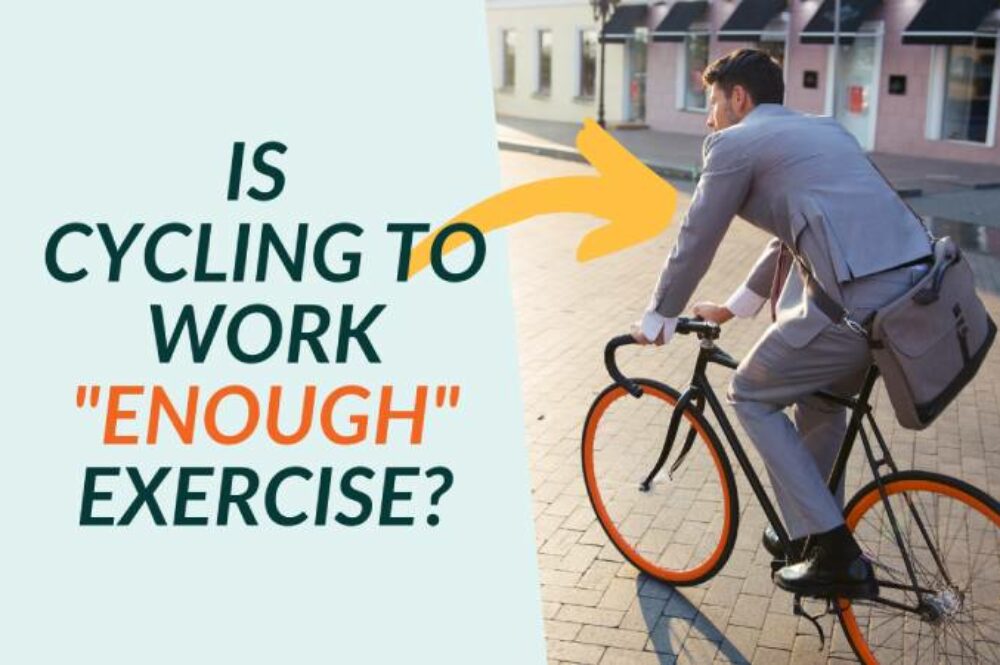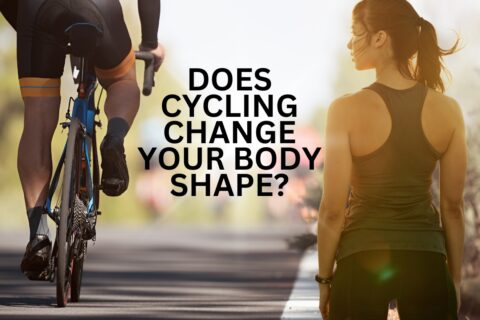This post may contain affiliate links, which help to keep Discerning Cyclist rolling. Learn more.
During the peak of the first wave of the COVID-19 pandemic in 2020, I dusted off my bike and running shoes and lost a good amount of weight, which you can read about here.
Of course, when I was cycling during this time, I wasn’t cycling to work because like probably 99 per cent of the population, I was working from home.
But don’t be fooled into thinking I went above and beyond, embarking on endless, painstaking rides to feel the benefit.
Little and often was my mantra, and it proved just as useful health-wise, as you too will surely find if you choose to take your commute by bike:

How Much Exercise is Recommended for Healthy Adults?
Well, cycling is an aerobic exercise, and the minimum recommended amount of moderate aerobic exercise is 150 minutes per week for adults (per the World Health Organisation).
So, if you cycle a total of 30 minutes per day (e.g. 15 mins to work and back), five times a week, you reach this threshold before even considering any other exercise.
This makes cycling a great baseline for core fitness. It’s part of your commute, so won’t eat into any ‘extra’ time in your day.
Is Cycling a Cardiovascular Exercise?
Yes – though formally a type of aerobic exercise, cycling is one of the best and most highly-recommend cardio workouts.
The ‘aerobic’ aspect to cycling strengthens your heart, helping it pump more oxygen to the rest of your body, while the ‘cardio’ side of it means your heart will pump more efficiently.
So, you get the best of both worlds in that respect through cycling. There are plenty more health benefits – such as alleviating your risk of cancer – from it, too, which you can read about here.
Does Cycling Burn More Calories Than Walking the Same Distance?
For the same distance, walking usually burns more calories is all on your muscles and cycling involves the bike itself sharing the workload with you.
Think about it – it will almost always take longer and more effort on your part to walk 5km than it would to cycle 5km.
So, you would burn more calories through cycling than walking for the same amount of time, but not the same distance.
More intense exercise, like running, will burn even more calories than cycling, but cycling is also easier on the body, meaning you can last for longer before tiring yourself out.
It’s all good for you, though, really. Check out this calories calculator if you’re curious, too.
So… is Cycling to Work ‘Enough’ Exercise?
Cycling 15 minutes to-and-from work each weekday would see you reach the minimum amount of aerobic exercise recommended by the World Health Organisation.
Of course, this is just the minimum recommended amount – but it’s also an incredibly passive way of reaching this amount. All exercise after this is basically a bonus!
Obviously, getting “enough” exercise really depends on a number of things – chiefly your goals, your distance, and your intensity.
If you want to lose weight, you essentially need to burn more calories than you consume – so cycling at a moderate pace for 30 minutes per day will shed roughly 300 calories on average.
Which isn’t an enormous amount, but then you don’t want enormous – the best and healthiest way to lose weight is to do so steadily and gradually.
What cycling to work is, though, is a positive lifestyle change for everyone who does it – as plenty more have found since the ‘cycling boom’ which COVID-19 appeared to trigger.
It’s not just about losing weight – physical exercise such as cycling can help your heart, your brain, your mental health, and much more. That in itself should make it feel worthwhile and rewarding.










